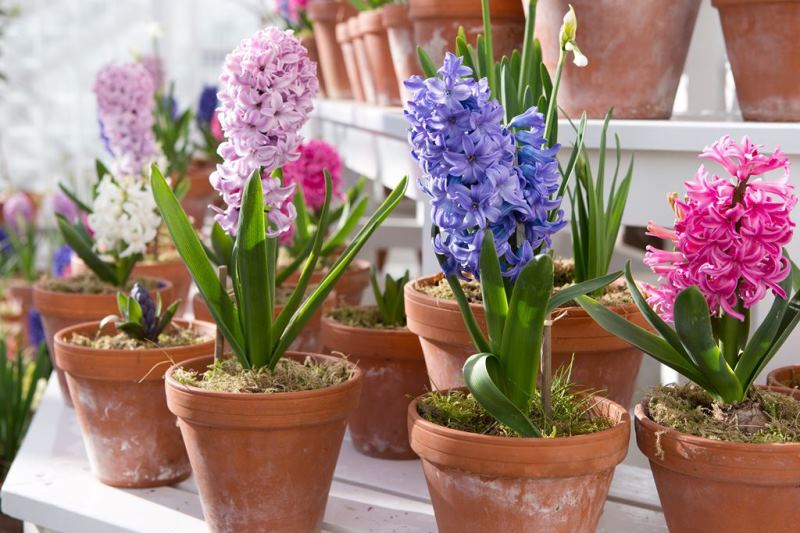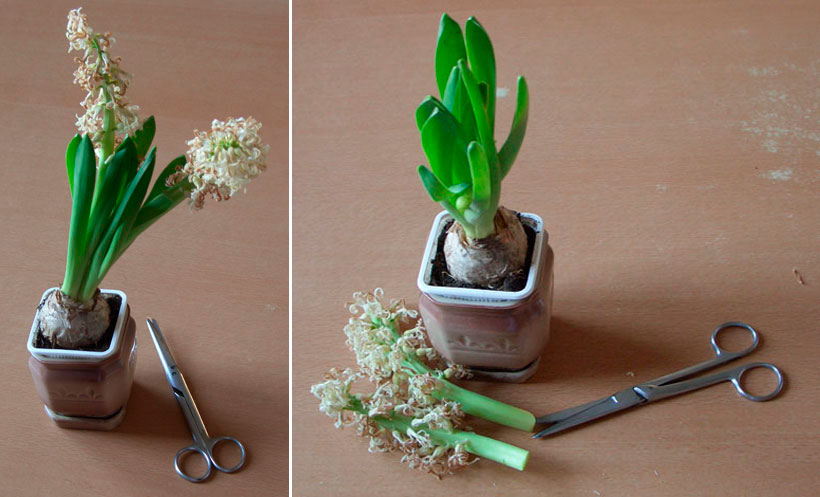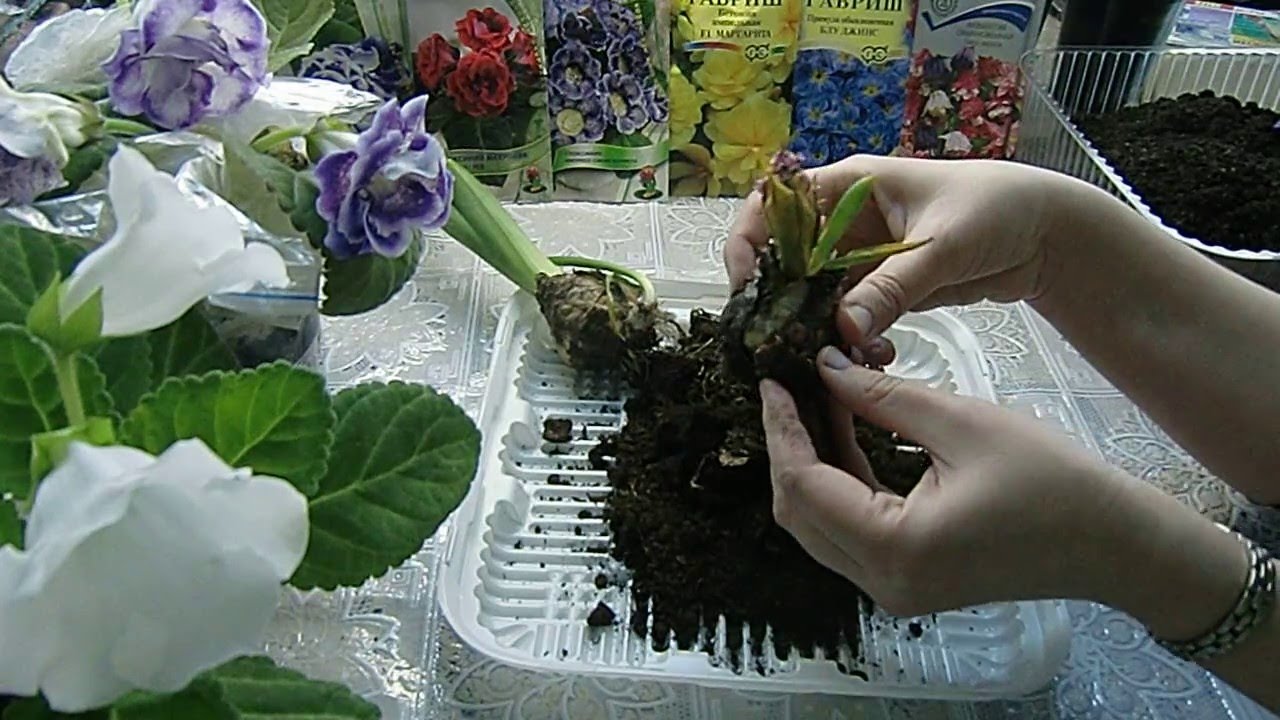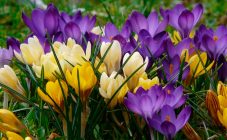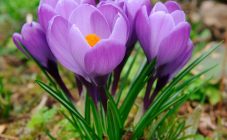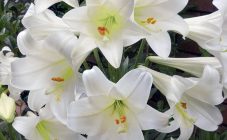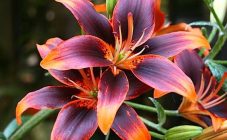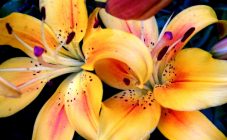Content:
Hyacinth care at home is simple. Subject to the necessary rules, you can grow hyacinths at home and turn them into a real flower miracle.
Growing hyacinths in pots
Potted hyacinth can often be found in apartments and houses. It does not lend itself to year-round flowering - it must "rest" for some time. Hyacinth growth consists of several stages:
- After the plant has time to bloom, it is necessary to remove the inflorescence from the bulb.
- In the future, moderate watering of the plant is carried out for some time. This is done until the leaves are completely dry.
- After the leaves dry, watering stops completely. The bulbs are transplanted into a new pot. They are kept in a dark place at a moderate temperature for 3 months. During this time, the plant gains strength and forms new bulbs.
- When new green shoots come, the flowers are transferred to the window.
To grow hyacinth in a pot, you need to adhere to the following conditions:
- The plant loves nutritious soil. It is better if it contains rotted organic matter. Before planting, the soil mixture must be warmed up at a temperature of up to 110 degrees for disinfection.
- Hyacinth at home should be kept in good light. However, the plant should not be exposed to direct sunlight. On a cloudy day, an additional fluorescent lamp is used.
- Plant feeding is carried out 2 times a month.
- Watering should be done according to the rules. The soil should be moist all the time. Even a small period of drought is undesirable for a plant. The plant should be watered through the tray, from which the water should be absorbed into the soil. If 15 minutes after watering the water remains in the pan, it must be poured out, because otherwise the roots will rot.
Forcing hyacinth
Caring for a hyacinth in a pot at home involves performing a certain system of step-by-step actions. First of all, you need to plant the bulb in the soil. From planting it to the beginning of flowering, it takes from 2.5 to 3 months. There are 3 types of forcing a plant:
- early (the bulbs are planted in October, then flowering can be expected by the New Year holidays);
- medium (the plant is planted in November, flowers appear in early February);
- late (the bulb is planted in December, which makes it possible to enjoy flowering around March or April).
For early distillation of hyacinth at home, you need to dig up the bulbs in late June-early July, dry at about 30 degrees for 2 weeks. They are then dried at lower temperatures for another 3 weeks. With medium and late forcing of hyacinths, these operations are carried out, respectively, a week later.
After heating, the bulbs are cooled for about 3 months. During this time, the rooting process takes place.
Landing is carried out as follows. At the bottom of the pot, sand should be poured in a small layer (it will be like drainage). Further there should be a layer of nutrient substrate.
Before growing, the baby is separated from the bulb, because it only takes away nutritional reserves from it. It must be buried 2-thirds of the height into the ground. There should be a crown on the surface. To make the flower stalks more powerful and more beautiful, calcium nitrate (2 g of saltpeter per liter of water) is added to the water for irrigation.The bulb should be in a cold place, and if spring forcing is planned, then the temperature in early January drops to 5 degrees.
During the entire period when the plant cools, the substrate must be moist, as the bulbs can dry out. The plant will be ready for placement if the leaf cone extends about 10 cm.
Only after cold preparation is the plant brought into the room where the addition will take place. It can be a warmed loggia, a room. The temperature should be around 12 degrees at first. From above, the plant is covered with dark material. In this state, the bulbs are kept for no more than 3 days. Then the temperature rises gradually.
Before exposing the plant to the light, it must be watered with fertilizer for bulbous plants. At this time, they require additional illumination with phytolamps, at least 10 hours during the day. Subject to the necessary conditions, the hyacinth should bloom in about 3 weeks.
To speed up flowering, you need to take care of it differently: you can increase the daylight hours for the plant up to 16 hours and at the same time increase the temperature to 22 degrees.
Forcing to cut
For this, the bulbs are planted in boxes (per 1 m2 - from 100 to 300). Cold exposure is lengthened by about 2 weeks. Cold holding, subsequent addition are carried out in the same way.
You need to cut the plant when the flowers are completely blooming. It is wrapped in thin paper one inflorescence and placed in a box. You need to store plants at a temperature of about 2 degrees.
The duration of preservation of inflorescences in water is up to 10 days. The vitalizer is able to further extend the life of the plant.
Hyacinth propagation
This plant is propagated by children, not seeds. They must be very carefully detached from the mother bulb. The division process is slow: no more than 4 children are formed during the year.
To speed up the breeding process, you should cut the bottom. Before this, the onion is treated with a weak solution of potassium permanganate. A teaspoon is used for cutting: the bottom is separated with it, then the onion is stored cut up at a temperature of at least 21 degrees.
Such courtship bears good fruit. Compliance with all the rules for breeding children helps to breed a large number of hyacinths.
What to do after flowering
When the flowering is over, gardeners are interested in how to keep the hyacinth after flowering in a pot, what to do with it. After the end of the flowering period, the bulbs do not need to be thrown away. All flowers must be removed, then water the plant with fertilizer and also water the plant. It should be in sufficient light for about a week. To activate the process of kidney formation, the ambient temperature rises. Only in this way will the bulb have the necessary mass and volume of nutrients.
After a week, you need to leave natural light. Watering should be gradually reduced. When the green mass turns yellow, watering stops completely. The pot must be placed on its side so that the substances from the leaves can pass into the bulb. After the leaves die off, the bulbs are removed from the soil and dried.
A simpler option is to cut the peduncle. Then the bulb is moved to a larger container. It should contain drainage and garden land at the bottom. In this case, the bulb must be covered with earth up to the neck.
How to store bulbs
Proper storage of the bulbs ensures the normal flowering process. They need to be removed from the ground, ventilated and dried in a dark room, for about a week, at room temperature.Then they need to be cleaned of soil and roots, placed in boxes in 2 layers. You must adhere to these rules:
- The next 2 months, the bulbs are stored at a temperature of about 25 degrees.
- The next month, the storage temperature of the bulbs drops to 18 degrees.
- To shorten the first stage of storage, the temperature is increased to 30 degrees.
- Before planting for the winter, the bulbs are kept in the cold for several days.
Observing the instructions for planting and caring for hyacinths will help to bring out beautiful flowers that will delight the eye for a long time. Storing the bulbs after flowering will allow you to enjoy the beauty in the years to come.
